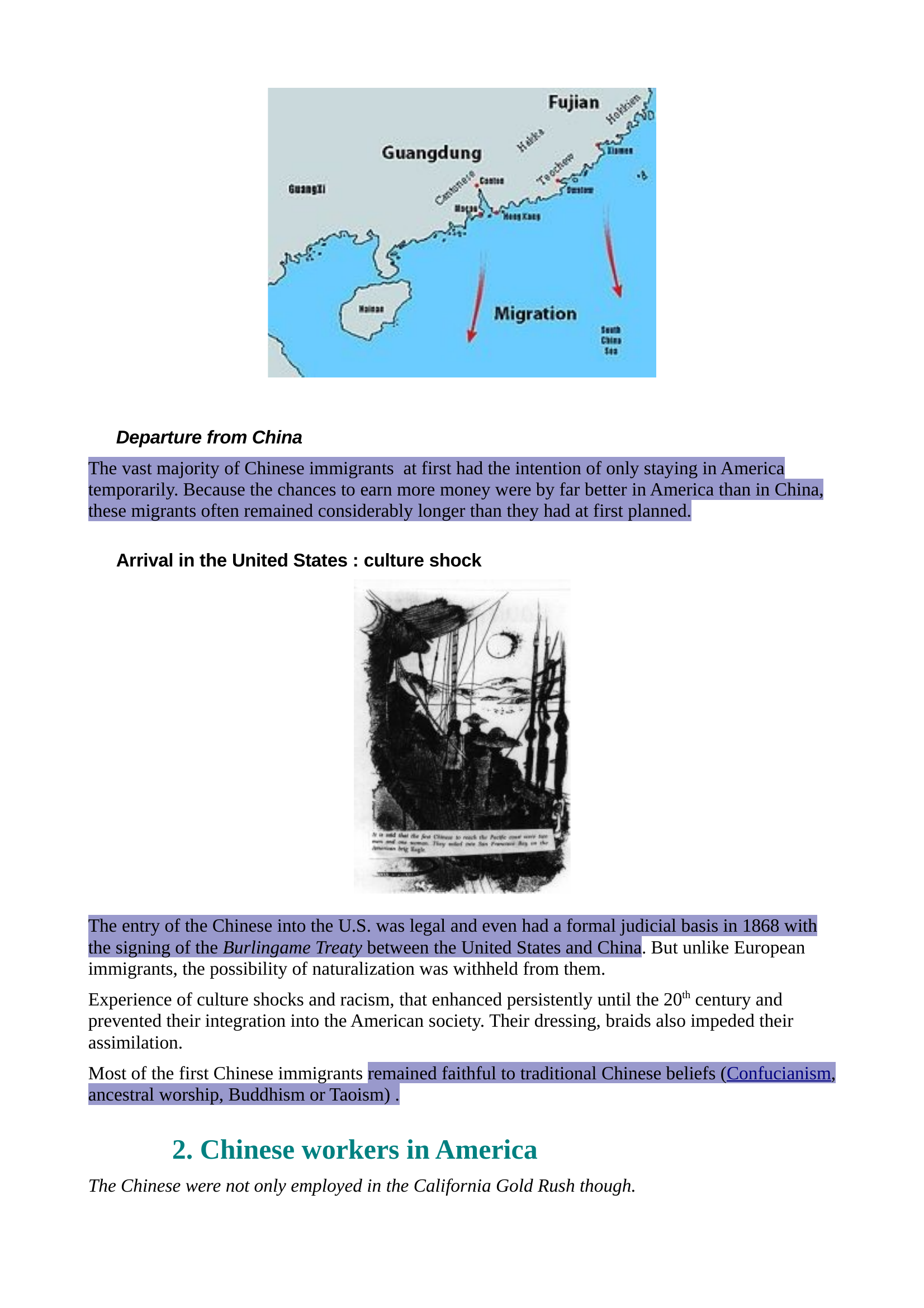L'immigration chinoise
Publié le 02/12/2012
Extrait du document


«
Departure from China
The vast majority of Chinese immigrants at first had the intention of only staying in America
temporarily.
Because the chances to earn more money were by far better in America than in China,
these migrants often remained considerably longer than they had at first planned.
Arrival in the United States : culture shock
The entry of the Chinese into the U.S.
was legal and even had a formal judicial basis in 1868 with
the signing of the Burlingame Treaty between the United States and China .
But unlike European
immigrants, the possibility of naturalization was withheld from them.
Experience of culture shocks and racism, that enhanced persistently until the 20 th
century and
prevented their integration into the American society.
Their dressing, braids also impeded their
assimilation.
Most of the first Chinese immigrants remained faithful to traditional Chinese beliefs ( Confucianism ,
ancestral worship, Buddhism or Taoism) .
2.
Chinese workers in America
The Chinese were not only employed in the California Gold Rush though..
»
↓↓↓ APERÇU DU DOCUMENT ↓↓↓
Liens utiles
- Immigration in Deutschland
- COMMENT LA GUERRE D’OPIUM A-T-ELLE ENGENDRÉ LA CHUTE DE L’EMPIRE CHINOISE ?
- TPE " l'immigration et les médias "
- Balzac et la petite tailleuse chinoise
- la gastronomie chinoise


